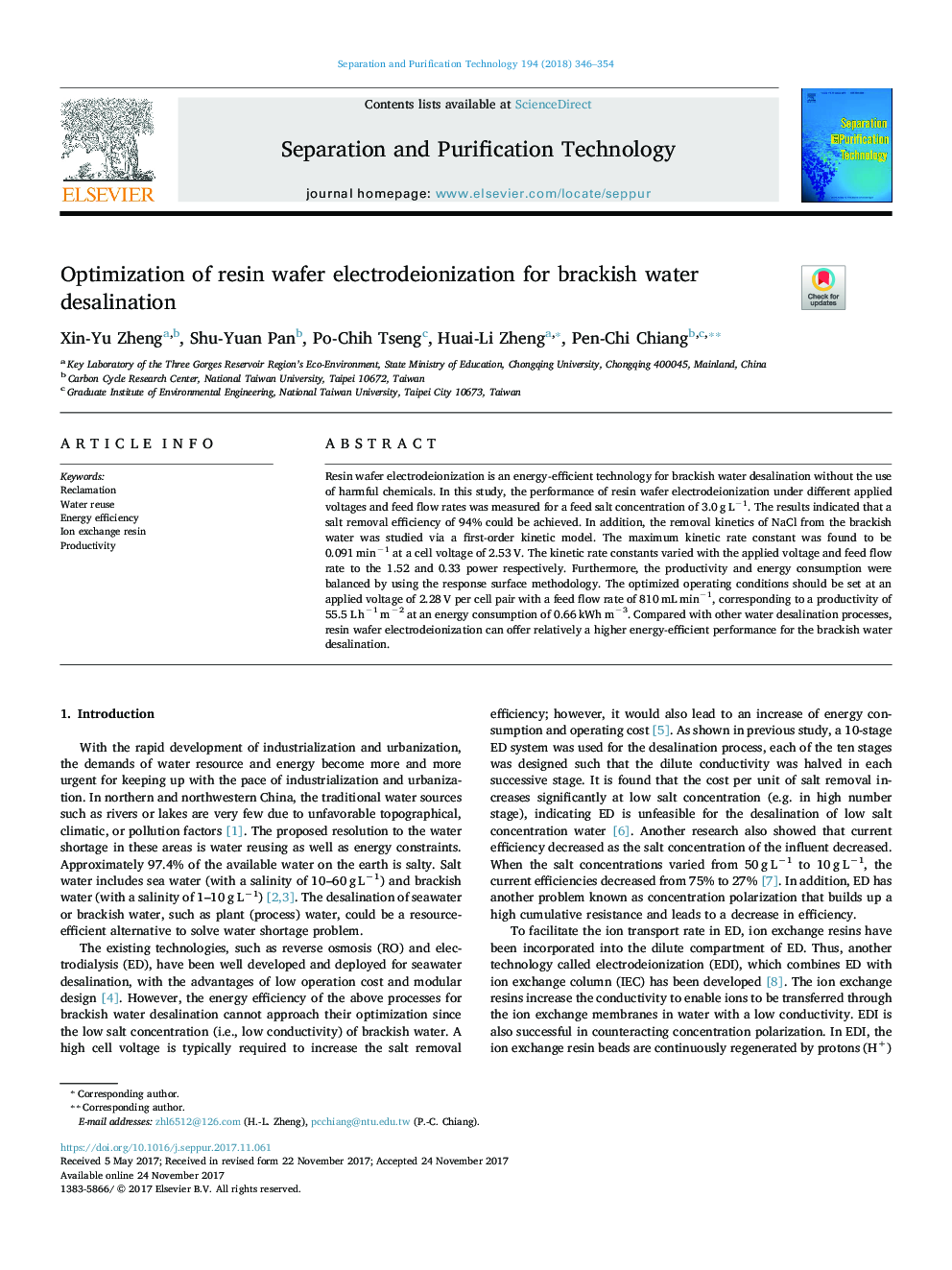| Article ID | Journal | Published Year | Pages | File Type |
|---|---|---|---|---|
| 7044088 | Separation and Purification Technology | 2018 | 9 Pages |
Abstract
Resin wafer electrodeionization is an energy-efficient technology for brackish water desalination without the use of harmful chemicals. In this study, the performance of resin wafer electrodeionization under different applied voltages and feed flow rates was measured for a feed salt concentration of 3.0â¯gâ¯Lâ1. The results indicated that a salt removal efficiency of 94% could be achieved. In addition, the removal kinetics of NaCl from the brackish water was studied via a first-order kinetic model. The maximum kinetic rate constant was found to be 0.091â¯minâ1 at a cell voltage of 2.53â¯V. The kinetic rate constants varied with the applied voltage and feed flow rate to the 1.52 and 0.33 power respectively. Furthermore, the productivity and energy consumption were balanced by using the response surface methodology. The optimized operating conditions should be set at an applied voltage of 2.28â¯V per cell pair with a feed flow rate of 810â¯mLâ¯minâ1, corresponding to a productivity of 55.5â¯Lâ¯hâ1â¯mâ2 at an energy consumption of 0.66â¯kWhâ¯mâ3. Compared with other water desalination processes, resin wafer electrodeionization can offer relatively a higher energy-efficient performance for the brackish water desalination.
Related Topics
Physical Sciences and Engineering
Chemical Engineering
Filtration and Separation
Authors
Xin-Yu Zheng, Shu-Yuan Pan, Po-Chih Tseng, Huai-Li Zheng, Pen-Chi Chiang,
